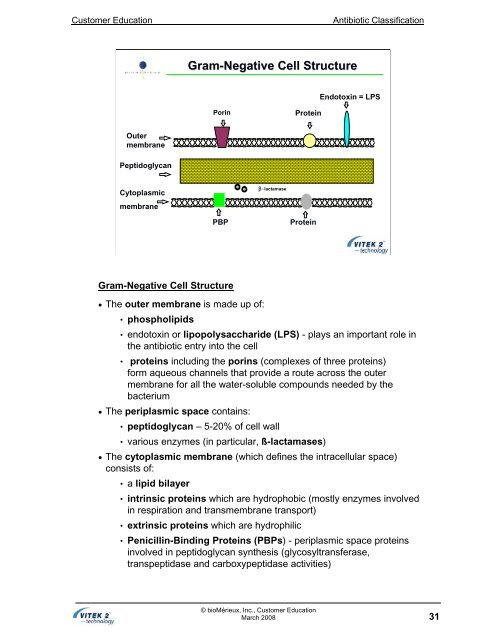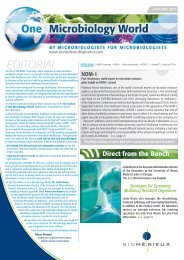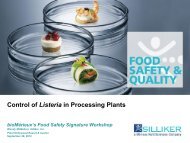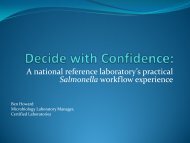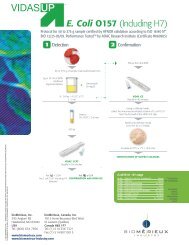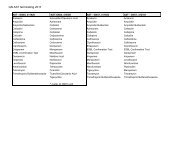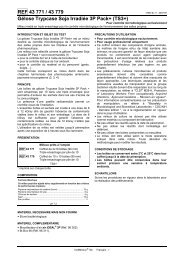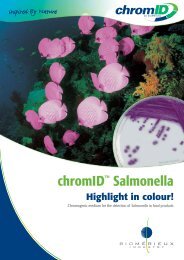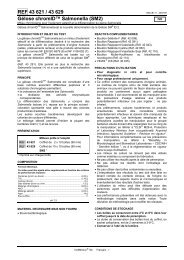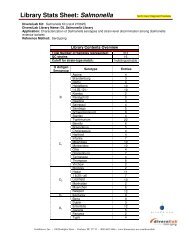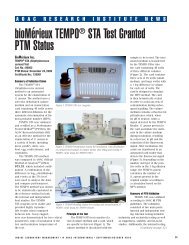Antibiotic Classification and Modes of Action - bioMerieux
Antibiotic Classification and Modes of Action - bioMerieux
Antibiotic Classification and Modes of Action - bioMerieux
You also want an ePaper? Increase the reach of your titles
YUMPU automatically turns print PDFs into web optimized ePapers that Google loves.
Customer Education <strong>Antibiotic</strong> <strong>Classification</strong><br />
Outer<br />
membrane<br />
Peptidoglycan<br />
Cytoplasmic<br />
membrane<br />
Gram-Negative Cell Structure<br />
• The outer membrane is made up <strong>of</strong>:<br />
• phospholipids<br />
Gram-Negative Gram Negative Cell Structure<br />
Porin Protein<br />
β−lactamase<br />
PBP Protein<br />
© bioMérieux, Inc., Customer Education<br />
March 2008<br />
Endotoxin = LPS<br />
• endotoxin or lipopolysaccharide (LPS) - plays an important role in<br />
the antibiotic entry into the cell<br />
• proteins including the porins (complexes <strong>of</strong> three proteins)<br />
form aqueous channels that provide a route across the outer<br />
membrane for all the water-soluble compounds needed by the<br />
bacterium<br />
• The periplasmic space contains:<br />
• peptidoglycan – 5-20% <strong>of</strong> cell wall<br />
• various enzymes (in particular, ß-lactamases)<br />
• The cytoplasmic membrane (which defines the intracellular space)<br />
consists <strong>of</strong>:<br />
• a lipid bilayer<br />
• intrinsic proteins which are hydrophobic (mostly enzymes involved<br />
in respiration <strong>and</strong> transmembrane transport)<br />
• extrinsic proteins which are hydrophilic<br />
• Penicillin-Binding Proteins (PBPs) - periplasmic space proteins<br />
involved in peptidoglycan synthesis (glycosyltransferase,<br />
transpeptidase <strong>and</strong> carboxypeptidase activities)<br />
31


